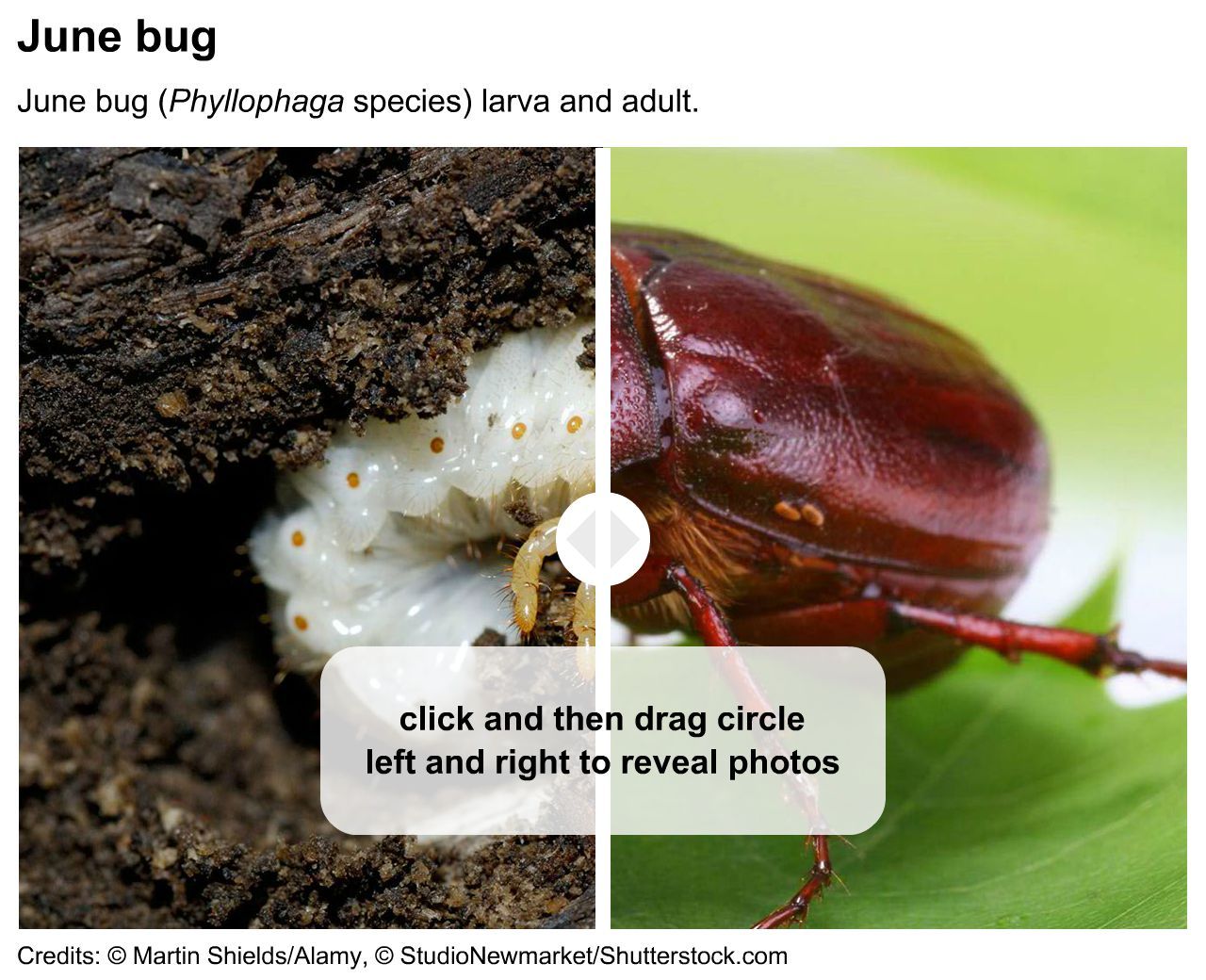June bug
Our editors will review what you’ve submitted and determine whether to revise the article.
- Michigan State University - College of Agriculture and Natural Resources - Integrated Pest Management - May or June Beetle
- Texas A&M Agrilife Extension - June beetle
- WebMD - June Bugs: What to Know
- The Spruce - How to Get Rid of June Bugs: 6 Easy Methods
- University of Wisconsin-Madison - Wisconsin Horticulture - May/June Beetles
- Also called:
- May beetle or June beetle
June bug, (genus Phyllophaga), genus of nearly 300 species of plant-eating beetles that commonly appear in the Northern Hemisphere during warm spring evenings and are attracted to lights.
- Kingdom: Animalia
- Phylum: Arthropoda
- Class: Insecta
- Order: Coleoptera
- Family: Scarabaeidae
- Subfamily Melolonthinae
See also list of beetles.
The heavy-bodied June bugs vary from 12 to 25 mm (0.5 to 1 inch) and have shiny wing covers (elytra). They feed on foliage and flowers at night, sometimes causing considerable damage. June bug larvae, called white grubs, are about 25 mm (1 inch) long and live in the soil. They can destroy crops (e.g., corn [maize], small grains, potatoes, and strawberries), and they can kill lawns and pastures by severing grasses from their roots.
Each female buries between 50 and 200 small pearl-like eggs in the soil. After three years of feeding on plant roots, the larvae pupate, emerge as adults in late summer, and then bury themselves again for the winter. In the spring the adults emerge once more and feed on available foliage. Adults live less than one year.

A natural enemy of the June beetle is the waved light fly (Pyrgota undata). The female fly lays an egg under the beetle’s elytra, where it hatches and feeds on the beetle, eventually killing it. Some small mammals, such as moles, are known to feed on the grubs, and June beetle larvae are considered excellent fish bait.
(For information on the related green June beetle [Cotinus nitida] or the ten-lined June beetle [Polyphylla decemlineata], see flower chafer.)






















